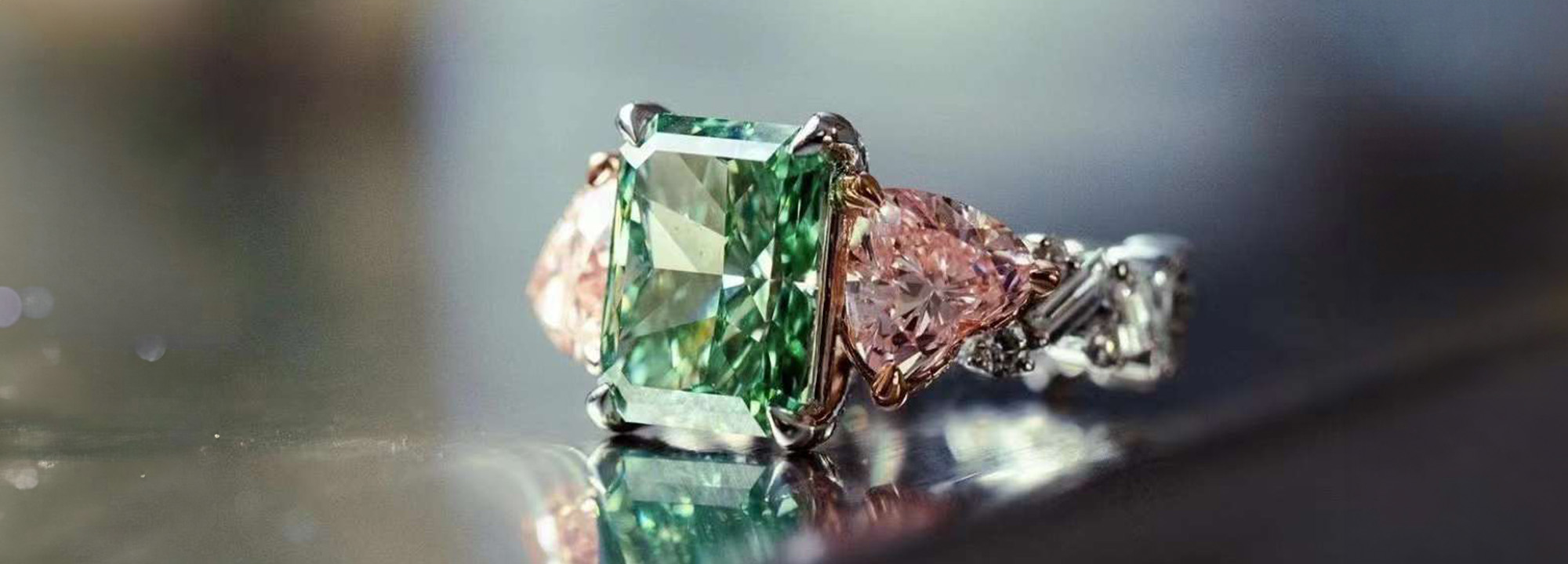
The Natural Phenomenon: What Causes the Green Color in Diamonds?
When one thinks of diamonds, the image of a pristine, colourless gemstone often comes to mind. However, diamonds can exhibit a stunning array of colours, with green being one of the most captivating and sought-after hues. Unlike other coloured diamonds, such as blue or pink, which result from the presence of impurities or structural defects, the green colour in diamonds is a natural phenomenon driven by fascinating geological processes. Read on to delve into the mysteries of green diamonds, uncovering the factors that cause this alluring colour to grace these precious stones.
Green diamonds owe their unique coloration to the presence of certain elements, such as nitrogen, radiation exposure, and structural deformities in their crystal lattice. Let’s explore these factors in detail.
Radiation Exposure:
One of the primary reasons behind the green colour in diamonds is exposure to natural radiation over millions of years. Diamonds, which are typically formed deep within the Earth’s mantle, can absorb radiation from nearby radioactive minerals. This radiation can alter the diamond’s crystal structure, leading to the creation of colour centres. In the case of green diamonds, the radiation-induced defects trap electrons, causing the gem to display a green hue.
Nitrogen Impurities:
Nitrogen is one of the most common impurities found in diamonds. When nitrogen atoms replace carbon atoms in a diamond’s crystal lattice, it can impart a yellowish or brownish tint to the stone. However, when nitrogen is paired with a unique geological environment and immense pressure, it can result in the creation of green diamonds. The interaction between nitrogen and radiation creates a complex interplay, leading to the green coloration.
Structural Defects:
Apart from radiation and nitrogen impurities, green diamonds can also owe their colour to structural defects within the diamond’s crystal lattice. These defects can distort the lattice, allowing the absorption and emission of specific wavelengths of light. This selective absorption and re-emission lead to the green colour we see in these extraordinary gems.
Geological Formation:
The geological history of green diamonds is crucial to understanding their colour. Green diamonds are often found in kimberlite pipes, which are volcanic rock formations that bring diamonds from the Earth’s mantle to the surface. The specific conditions in these geological environments, combined with the presence of radiation and nitrogen, play a significant role in the creation of green diamonds. The longer a diamond is exposed to these conditions, the more intense and vivid its green colour becomes.
Grading and Rarity:
Green diamonds come in various shades, from pale green to deep forest green, and are graded based on their hue, saturation, and tone. The Gemological Institute of America (GIA) classifies green diamonds into categories like Fancy Light Green, Fancy Green, Fancy Intense Green, and Fancy Vivid Green. The more intense and saturated the green colour, the rarer and more valuable the diamond becomes. As a result, vivid green diamonds are among the rarest and most prized gems in the world, often fetching astronomical prices at auctions.
Conclusion:
In conclusion, the natural phenomenon that causes the green colour in diamonds is a captivating interplay of radiation exposure, nitrogen impurities, structural defects, and geological conditions. The green diamond’s exquisite beauty is a testament to the intricate processes that occur deep within the Earth over millions of years. These unique gems are not only a testament to the Earth’s geological history but also a testament to the enduring allure of the world’s most coveted gemstone. Green diamonds, with their natural, mesmerising colour, continue to captivate the hearts and minds of diamond enthusiasts and collectors worldwide, making them a truly exceptional and treasured gem in the world of jewellery.



